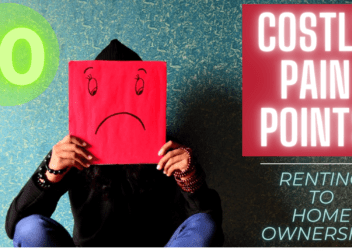Payment Shock- How First Time Home Buyers Can Avoid It
- July 5, 2024
- First Time Home Buyers, Mortgage Home Loans
- 7 mins read
What Is Payment Shock in the Housing Industry?
Understanding Payment Shock: What It Is and How First-Time Home Buyers Can Avoid It
What Is Payment Shock?
Payment shock occurs when your monthly housing costs increase significantly more than anticipated. This can happen when moving from renting to owning a home or when dealing with adjustable-rate mortgages that increase over time. Payment shock can catch first-time home buyers off guard, leading to financial difficulties and stress. Essentially, payment shock is when the actual costs of homeownership are much higher than what was originally expected or planned for.
Why Is Payment Shock a Problem for First-Time Home Buyers?
First-time home buyers are particularly vulnerable to payment shock because they often lack experience with the full range of expenses associated with owning a home. Unlike renting, homeownership involves additional costs such as property taxes, insurance, and maintenance. If these costs are not anticipated and budgeted for, new homeowners may find themselves struggling to meet their financial obligations, leading to potential risks like foreclosure or damage to their credit score.
Detailed Tips to Avoid Payment Shock
Avoiding payment shock is essential for a smooth transition into homeownership. Here are some comprehensive tips to help first-time home buyers manage their finances and avoid unexpected financial stress:
1. Create a Detailed Budget
Why It’s Important: A detailed budget helps you understand your financial limits and plan accordingly. It provides a clear picture of your income, expenses, and how much you can afford to spend on a home.
How to Do It:
- List all income sources: Include salaries, bonuses, and any other regular income.
- Track current expenses: This includes rent, utilities, groceries, transportation, and other monthly bills.
- Add new expenses related to homeownership: Mortgage payments, property taxes, insurance, utilities, maintenance, and HOA fees if applicable.
- Compare total expenses to income: Ensure that your new housing costs do not exceed what you can afford.
Example: If your monthly income is $4,000 and your total expenses are $3,000, you have $1,000 left. Make sure your new housing costs fit within this amount.
2. Build an Emergency Fund
Why It’s Important: Having a financial cushion can help you manage unexpected expenses without falling behind on your mortgage or other bills.
How to Do It:
- Set savings goals: Aim to save at least three to six months’ worth of living expenses.
- Separate savings account: Keep your emergency fund in a separate account to avoid dipping into it for non-emergencies.
- Automatic transfers: Set up automatic transfers to your savings account each month.
Example: If your monthly expenses are $3,000, try to save between $9,000 and $18,000 in your emergency fund.
3. Choose a Fixed-Rate Mortgage
Why It’s Important: A fixed-rate mortgage ensures your monthly payments remain the same throughout the loan term, protecting you from interest rate increases that can lead to payment shock.
How to Do It:
- Understand mortgage types: Learn the differences between fixed-rate and adjustable-rate mortgages.
- Lock in your rate: Once you find a suitable fixed-rate mortgage, lock in the rate to prevent changes before closing.
- Compare offers: Shop around and compare offers from different lenders to find the best terms.
Example: If you lock in a 3.5% interest rate for a 30-year fixed-rate mortgage, your monthly payments will remain the same for the entire term, providing financial stability.
4. Get Pre-Approved for a Mortgage
Why It’s Important: Pre-approval gives you a clear idea of how much you can borrow and afford. It also shows sellers that you’re a serious buyer.
How to Do It:
- Gather financial documents: Collect pay stubs, tax returns, bank statements, and credit reports.
- Contact multiple lenders: Compare pre-approval offers to find the best terms.
- Use pre-approval as a guide: Use the pre-approved amount to set realistic expectations and avoid looking at homes that are too expensive.
Example: If you’re pre-approved for a mortgage of $250,000, you know your price range and can avoid looking at homes that are out of your budget.
5. Understand the 28/36 Rule
Why It’s Important: The 28/36 rule helps ensure that your housing expenses and total debt payments remain manageable.
How to Do It:
- Calculate your housing expenses: Ensure they do not exceed 28% of your gross monthly income.
- Calculate total debt payments: Ensure they do not exceed 36% of your gross monthly income.
- Adjust your budget: If your expenses are higher, consider reducing other debts or looking for a less expensive home.
Example: If your gross monthly income is $5,000, your housing expenses should not exceed $1,400, and your total debt payments should not exceed $1,800.
6. Factor in Future Expenses
Why It’s Important: Planning for future costs, such as repairs and upgrades, helps you avoid financial strain down the line.
How to Do It:
- Estimate maintenance costs: Set aside money each month for potential repairs and upkeep.
- Plan for upgrades: Consider future home improvements and factor these costs into your budget.
- Set aside funds: Create a separate savings account for home-related expenses.
Example: If you expect to replace the roof in five years at a cost of $10,000, save $167 each month to cover this expense.
7. Avoid Large Purchases Before Buying a Home
Why It’s Important: Large purchases on credit before buying a home can affect your credit score and increase your debt-to-income ratio.
How to Do It:
- Postpone big expenses: Delay purchasing items like a new car or expensive furniture until after you’ve closed on your home.
- Maintain stable finances: Keep your credit report clean and avoid new debt.
- Focus on home buying: Concentrate on securing your home purchase before making other financial commitments.
Example: If you’re tempted to buy a new car, wait until after you’ve moved into your new home to ensure it doesn’t impact your mortgage approval.
8. Seek Professional Advice
Why It’s Important: Professionals can provide valuable guidance and help you make informed decisions.
How to Do It:
- Work with a real estate agent: Choose an agent who knows the local market and can help you find homes within your budget.
- Consult a mortgage broker: Explore different loan options and find the best mortgage for your situation.
- Meet with a financial advisor: Review your budget and financial plans with an advisor.
Example: A real estate agent can help you negotiate better terms, while a financial advisor can ensure your budget is realistic.
9. Use Online Calculators
Why It’s Important: Online calculators help you estimate your monthly payments and compare different mortgage options.
How to Do It:
- Mortgage calculators: Use these to input loan amounts, interest rates, and terms to see how different factors affect your payments.
- Budgeting tools: Utilize tools that track your expenses and help you plan for homeownership costs.
- Comparison tools: Compare loan offers and interest rates from various lenders.
Example: Using an online calculator, you can see how a 0.5% increase in interest rates affects your monthly mortgage payment.
10. Consider Future Income Changes
Why It’s Important: Planning for potential changes in your income helps ensure your mortgage payments remain manageable.
How to Do It:
- Anticipate raises and promotions: Factor potential income increases into your long-term financial plans.
- Plan for life changes: Consider how starting a family or changing jobs might impact your budget.
- Adjust savings goals: Save more during periods of higher income to cushion against future uncertainties.
Example: If you expect to receive a raise next year, adjust your budget to reflect the increased income and save the extra money for future expenses.
11. Educate Yourself
Why It’s Important: Understanding the home buying process and financial terms can help you make better decisions and avoid surprises.
How to Do It:
- Homebuyer education classes: Often offered by local housing agencies or online, these classes cover the basics of home buying.
- Read and research: Books, articles, and guides about home buying and personal finance are valuable resources.
- Ask questions: Seek advice from experienced homeowners or professionals to clarify any doubts.
Example: A homebuyer education class might teach you about mortgage options, budgeting tips, and the steps to buying a home.
Preventing Payment Shock with the Right Mortgage
Choosing the right mortgage can play a big role in avoiding payment shock. Fixed-rate mortgages offer stability and predictability, making it easier to budget for your monthly payments. Adjustable-rate mortgages (ARMs), on the other hand, can start with lower payments but may increase over time, leading to higher payments and potential shock.
Lenders and Payment Shock
Lenders assess the risk of payment shock when evaluating mortgage applications. They use your current income, credit score, and existing debts to determine how much you can afford. They also consider your ability to handle potential increases in housing costs. Being honest with your lender about your financial situation and choosing a loan that fits your budget are essential steps in avoiding payment shock.
Conclusion
Avoiding payment shock is crucial for first-time home buyers. By planning ahead, budgeting carefully, and choosing the right mortgage, you can manage your housing costs and enjoy the benefits of homeownership without financial stress. Always be proactive about understanding your finances and seek professional advice when needed to make informed decisions about your home purchase.



